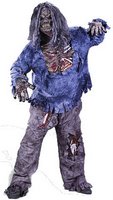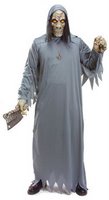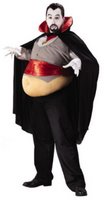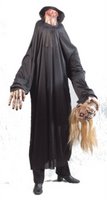Craziest haloween costumes and facts
 On Oct
On Oct ober 31st, you will likely see witches, ghosts, goblins, skeletons, demons, and other evil characters knocking at your door and hollering "trick or treat", and they will expect a treat or you will be tricked. There will be parties where kids (and even adults) bob for apples, tell fortunes, or go through haunted houses. There will be decorations of jack-o-lanterns, witches on brooms, and black cats. It is the only day of the year when we give free food to strangers and display carved vegetables on our front porches. . .
ober 31st, you will likely see witches, ghosts, goblins, skeletons, demons, and other evil characters knocking at your door and hollering "trick or treat", and they will expect a treat or you will be tricked. There will be parties where kids (and even adults) bob for apples, tell fortunes, or go through haunted houses. There will be decorations of jack-o-lanterns, witches on brooms, and black cats. It is the only day of the year when we give free food to strangers and display carved vegetables on our front porches. . .What is the History of Halloween?
History: The Celtic festival of Samhain is probably the source of the present-day Halloween celebration. The Celts lived more than 2,000 years ago in what is now the United Kingdom, Ireland, and northern France. Their new year began on November 1. A festival t
 hat began the previous evening honored Samhain, the Celtic lord of death. The celebration marked the beginning of the season of cold, darkness, and decay. It naturally became associated with human death. The Celts believed that Samhain allowed the
hat began the previous evening honored Samhain, the Celtic lord of death. The celebration marked the beginning of the season of cold, darkness, and decay. It naturally became associated with human death. The Celts believed that Samhain allowed the souls of the dead to return to their earthly homes for this evening.
souls of the dead to return to their earthly homes for this evening.On the evening of the festival, the Druids, who were the priests and teachers of the Celts, ordered the people to put out their hearth fires. The Druids built a huge new year's bonfire of oak branches, which they considered sacred. They burned animals, crops, and possibly even human beings as sacrifices. Then each family relit its hearth fire from the new year's fire. During the celebration, people sometimes wore costumes made of animal heads and skins. They told fortunes about the coming year by examining the remains of the an
 imals that had been sacrificed.
imals that had been sacrificed.
The Romans began the conquest of the Celts in A.D. 43 and ruled much of what is now the United Kingdom for about 400 years. During this period, two Roman autumn festivals were combined with the Celtic festival of Samhain. One of them, called Feralia, was held in late October to honor the dead. The other festival honored Pomona, the Roman goddess of fruit and trees. Apples probably became associated with Halloween because of this festival.
Trick or Treat
Halloween was a time for making mischief - many parts of England still
recognise Halloween as Mischief Night - when children would knock on doors demanding a treat (Trick or Treat) and people would disguise themselves as witches, ghosts, kelpies
 and spunkies, in order to obtain food and money from nervous householders.
and spunkies, in order to obtain food and money from nervous householders.Halloween is also know by other names:
All Hallows Eve
Samhain
All Hallowtide
The Feast of the Dead
The Day of the Dead
Halloween in Welsh is 'Nos Calan Gaeaf'.
Halloween is correctly spelt as Hallowe’en.
Black cats were originally believed to protect witches' powers from negative forces.

A pumpkin is really a squash, and comes from the same family as the cucumber.
About 99% of pumpkins sold are used as Jack O' Lanterns at Halloween.
The biggest pumpkin in the world tipped the scales at a whopping 1,446 pounds. This gigantic gourd was weighed in October 2004 at a pumpkin festival in Port Elgin, Ontario, Canada.

The record for the fastest pumpkin carver in the world is Jerry Ayers of Baltimore, Ohio. He carved a pumpkin in just 37 seconds!
The very first jack o' lantern was made out of hollowed out turnips.
Ringing a bell scares evil spirits away.
If you see a spider on this night, it could be the spirit of a dead loved one who is watching you.
To meet a witch, put your clothes on inside out and walk backwards on Halloween night.


0 Comments:
Post a Comment
<< Home